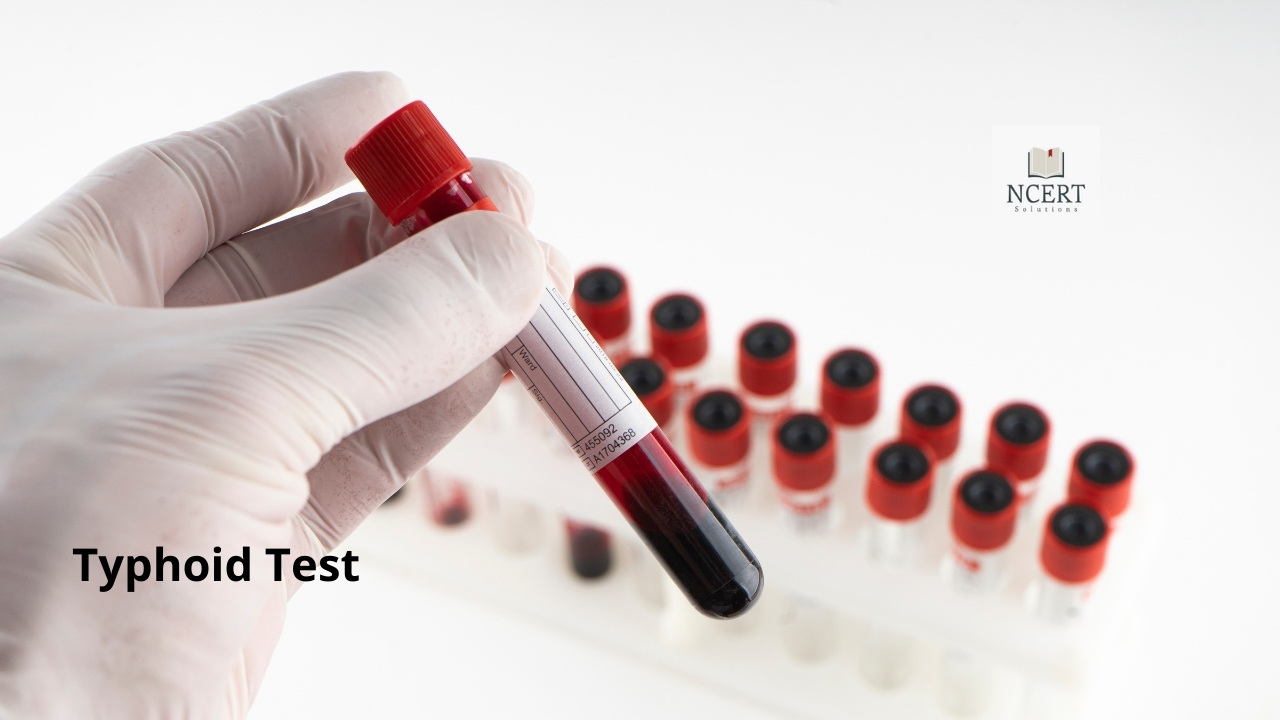The Widal test is one such method, with the help of which a possible test for intestinal fever is done. The problem of fever in the intestines is also known as typhoid fever.
Doctors often recommend the Widal test in typhoid fever which is exclusively based on your symptoms and previous medical information. Typhoid is caused by Salmonella bacteria. Salmonella bacteria are generally found in animal and human intestines and are shed through feces.
Salmonella bacteria primarily attack humans when they come in contact with contaminated water or food.
Typhoid fever is tested (diagnosed) when Salmonella bacteria are found in stool, urine or blood etc. However, the test is confirmed when Salmonella bacteria are found in the blood or other body fluids or tissues.
What is the meaning of the Widal (Typhoid) Test?
Many of you search for the meaning of the Widal test or the “Typhoid test” on the internet. Therefore, we are letting you know that – The Widal test just means a simple blood test in which a small blood sample from your vein is taken and then a laboratory examination is done on it. This test is often referred tp as the Typhoid test.
Widal test is a primary test to examine typhoid fever, other tests are also done to detect typhoid fever but they are more expensive than this.
As typhoid has become a common problem in India, this test has also become a common lab test, Even though better tests are available, the Typhoid test is used extensively to detect typhoid fever.
The Widal test working principle
- For the test, a person’s blood is mixed with a bacterial site, also called an antigen.
- If lumps or clumps start to form in this solution, then that person has antibodies in the blood. which are specifically identified at the site of the bacterium.
In response to exposure to Salmonella bacteria, antibodies are produced in the serum and the organisms begin to clump. This is the basis of the Typhoid test.
According to the World Health Organization (WHO), there are several factors that can affect the results of the Widal test. It is considered better not to rely too much on this test. The World Health Organization recommends the use of culture tests instead of the Widal test when possible.
However, until some other simple, cheap and reliable method is available, perhaps the Widal test will continue to be used in India to confirm typhoid fever.
What is the purpose of the Widal Test?
It is very important to get an accurate test for typhoid fever in its early stages.
- The Widal test is used to diagnose typhoid fever.
- To identify individuals who could potentially be carriers of the bacteria.
- In addition, it can be difficult to diagnose typhoid on clinical grounds, as the symptoms can be varied or similar to those of other febrile illnesses. This is why the Widal or Typhoid test is considered important to check the potential presence of Salmonella bacteria in the blood and to confirm Typhoid fever.
What is done before the test?
This test is done as a simple blood test, so no special precautions are needed before this test. The blood sample is taken from the side, so wear a half-sleeved or easy-to-sleeve T-shirt or shirt before going for the test.
There are certain types of drugs that can affect the results of the Widal test. Therefore, if you are taking any kind of medicine or herbal product etc, then tell your doctor about it before the test. By doing this, your test results are obtained with more accuracy and the chances of getting a wrong test are also reduced to a great extent.
What is done during the test?
The process of collecting samples for the Typhoid test is done in the following ways.
Procedure for obtaining a blood sample from adults:
- To perform the test, an elastic band is first wrapped around 3-4 inches above where the needle is to be inserted. (The sample is usually taken from the veins on the inner side of the elbow)
- After that, the place where the needle is to be inserted is cleaned with antiseptic.
- The cap on the needle is then removed and held directly over the vein. The skin is pulled and tightened.
- The needle is then pushed forward and the needle is inserted into the skin.
- After this, a sufficient amount of blood sample is drawn from the syringe attached to the needle.
- After the sample is removed, the elastic band is removed from the arm. A piece of cotton is placed lightly over the needle and the needle is slowly withdrawn from below.
- Immediately thereafter, the blood sample is taken from the syringe into the blood container and sent to the lab for testing.
What is done after the Widal blood test?
After the sample is taken, the needle is removed and a cotton swab or bandage is applied to stop the bleeding. A slight prick or pain is felt during bleeding.
There may also be a blue or purple mark at the injection site, which gets better in a few days.
Risks
Many people who undergo the Widal Test may not have any issues, however, there are still some risks associated with taking a blood sample:
- excessive bleeding,
- fainting or spinning of the head,
- hematoma (blood clot inside the skin),
- Infection (some slight risk of getting a needle piercing infection) etc.
Results
A normal result in the Widal test
This test and its score indicate the degree of reaction between the antibodies and the test solution of the person taking the test.
The list below shows the relationship between test scores and results.
- 0 means no reaction
- 1+ means 25% reaction
- 2+ means 50% reaction
- 3+ means 75% reaction
- 4+ means 100% reaction
If the score is zero then it means that your result is normal. It also means that you do not have typhoid fever.
A positive result of the Widal blood test may indicate:
- infection with typhoid
- vaccination against typhoid
- Enteric fever or typhoid fever, if associated symptoms are present.
If a person has been vaccinated, it will contain antibodies against typhoid bacteria (Salmonella bacteria), which can lead to a false/false Vidal test result.
This test is unable to differentiate between current infection and past infection, and may also cross-react with different species of Salmonella.
False-positive results of the Vidal test are also known to occur in the following cases:
- Typhus
- Malaria, especially in children
- Chronic liver disease
- Rheumatoid arthritis
- Nephrotic syndrome etc.
Lab test results are not to be interpreted as stand-alone tests. Test results are interpreted after appropriate clinical findings and additional supplemental tests/information are added to them.
Based on the clinical scenario, the doctor will explain to you the result of your test.
When should the Widal test be done?
Below are some clinical indications when the Widal test is advised to be done:
- Fever
- Chills
- Tiredness
- Headache
- stomach ache
- Diarrhea
- Constipation
- Weight loss
- Red rashes, which range from 2 to 4 mm in diameter, are also called “rose spots”.
Cost of the Widal test
Widal test is an inexpensive test that ranges from 200 to 350 INR in India. The Widal test price may differ from lab to lab.
This Typhoid test is also done free of cost in Government hospitals run by the Center and State Governments in India.




